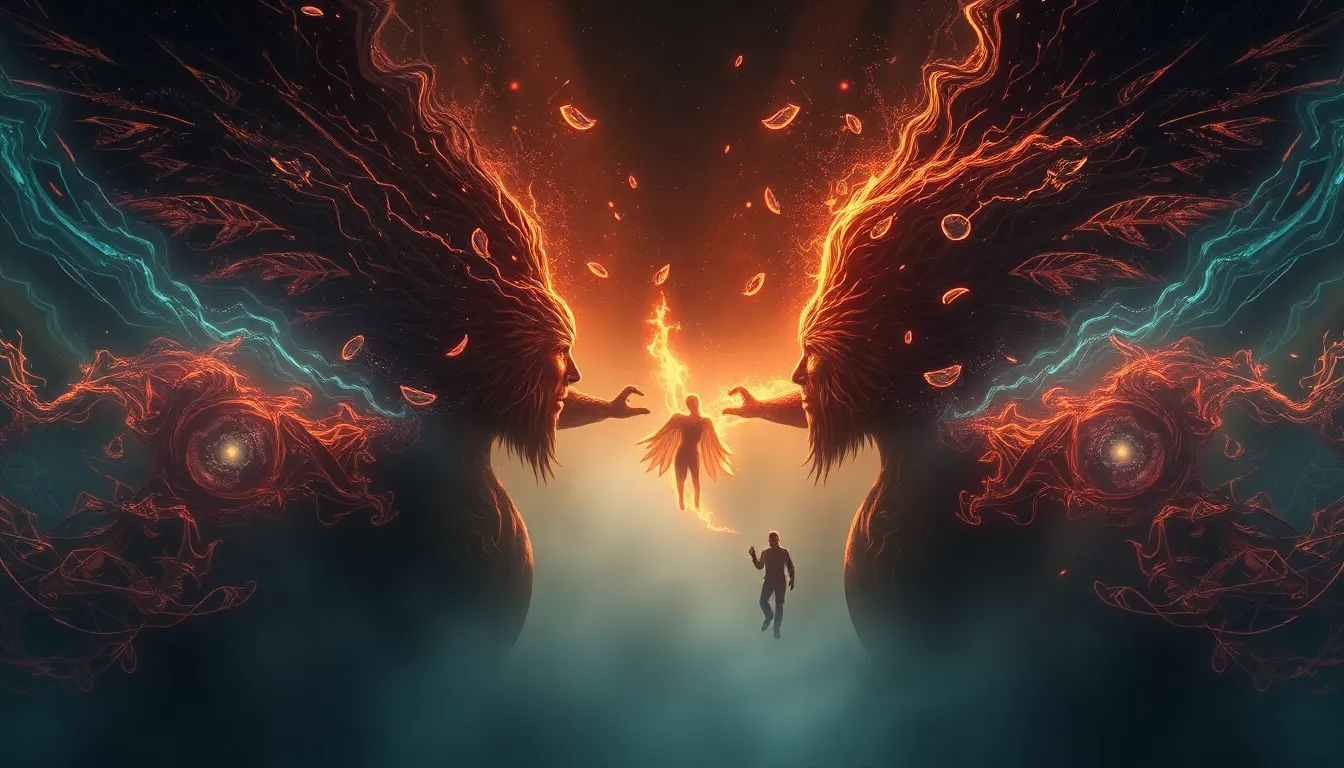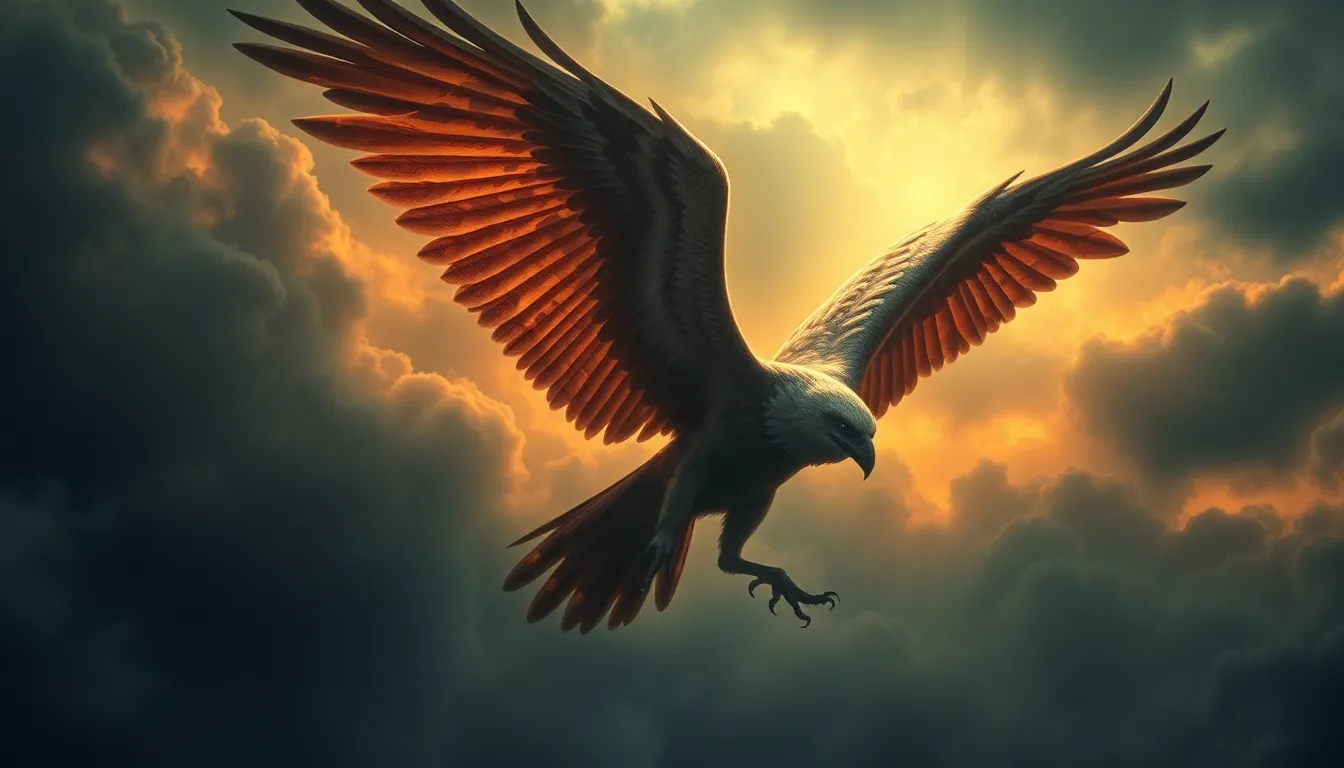I. Introduction
Fear and courage are two fundamental emotions that shape the human experience. Fear often acts as a barrier, holding individuals back from reaching their full potential, while courage empowers them to confront challenges head-on. Transformations in myths illustrate how characters navigate these emotions, ultimately leading to empowerment and personal growth.
Myths are not merely stories; they are reflections of human psychology and social values. They encapsulate the complexities of fear and courage, providing valuable lessons on overcoming adversity. This article focuses on the transformative journeys depicted in various myths, highlighting the empowerment that arises from the transition from fear to courage.
II. The Role of Fear in Myths
Fear is a universal theme that resonates across cultures and time periods. In myths, fear manifests in various forms, often serving as the catalyst for character development and transformation.
- Greek Myths: In many Greek myths, characters face their fears, often in the form of monstrous creatures or overwhelming odds. For example, Perseus must confront the fearsome Medusa to save Andromeda.
- Norse Myths: Norse mythology frequently explores themes of fate and fear, as seen in the tales of Ragnarök, where gods face the impending doom with trepidation.
- Indigenous Myths: Many Indigenous stories highlight the fear of nature’s power, such as the stories of trickster figures who navigate the dangers of the natural world.
Psychologically, fear in mythological contexts serves to mirror the internal struggles faced by individuals. These narratives provide insight into how fear can be acknowledged and transformed into courage.
III. Archetypes of Transformation
Myths often feature archetypes that embody the duality of fear and courage. These archetypes serve as templates for understanding the transformative journey.
- Hero: The hero archetype often embarks on a quest that involves facing fears and overcoming obstacles, leading to personal growth.
- Mentor: The mentor figure provides guidance and support, helping the hero navigate their fears.
- Trickster: Tricksters challenge norms and reveal fears in humorous or unexpected ways, often leading to profound realizations.
Characters like Hercules, who faces his fears through arduous labors, and Odysseus, who confronts both internal and external challenges, exemplify these archetypes. Their transformations highlight the importance of facing fear as a stepping stone to empowerment.
IV. Myths That Illustrate the Journey from Fear to Courage
Several myths poignantly illustrate the transformative journey from fear to courage. These narratives often encapsulate universal themes that resonate with audiences across cultures.
- Hercules: Hercules begins his journey as a fearful mortal but becomes a symbol of strength and bravery after facing and overcoming his twelve labors.
- Beowulf: In the epic poem “Beowulf,” the protagonist confronts the monstrous Grendel and later Grendel’s mother, showcasing his evolution from fear to fearless heroism.
- The Story of Buddha: The life of Siddhartha Gautama, who confronts his fears of suffering and death, leads to his enlightenment and the emergence of Buddhism.
Comparing these transformations reveals a common thread: the confrontation of fear is a necessary step towards realizing one’s true potential and discovering inner strength.
V. The Role of Mentors and Guides
Mentorship is a crucial element in the transformation process depicted in myths. Mentors provide guidance, wisdom, and support, facilitating the hero’s journey from fear to courage.
- Gandalf: In “The Lord of the Rings,” Gandalf serves as a mentor to Frodo, helping him navigate the fear of carrying the One Ring and the associated dangers.
- Athena: In Greek mythology, Athena often guides heroes like Odysseus, providing them with the courage and wisdom needed to face their fears.
These mentor figures exemplify the importance of support systems in our own lives, illustrating how guidance can empower individuals to overcome their fears.
VI. Symbolism and Metaphors of Transformation
Myths are rich in symbolism and metaphors that represent the journey from fear to courage. These symbolic elements enhance the narrative and deepen the understanding of transformation.
- Dragons: Often symbolize fear itself, representing the inner demons that one must confront to achieve personal growth.
- Mountains: Symbolize obstacles that must be overcome, representing both the challenges faced and the triumph of reaching new heights.
Metaphors in myths serve not only to convey the narrative of transformation but also to evoke emotional responses and reflect the complexities of the human condition. The impact of visual and literary symbolism allows audiences to connect deeply with the themes of empowerment.
VII. Psychological and Sociocultural Implications
Myths reflect societal values regarding fear and courage, offering insight into the collective psyche of cultures. The psychological journeys of characters often mirror the struggles faced by individuals in society.
- The portrayal of fear in myths can reveal societal fears and anxieties, such as the fear of failure, death, or the unknown.
- Courage is often celebrated as a virtue, encouraging individuals to confront their fears and strive for personal growth.
In contemporary society, these myths remain relevant, serving as reminders of the human capacity for resilience and transformation.
VIII. Empowerment through Storytelling
Storytelling plays a therapeutic role in personal transformation, allowing individuals to process their fears and find courage through relatable narratives.
- Myths can inspire individuals to confront their own fears, fostering a sense of empowerment and agency.
- Modern adaptations of mythological stories, such as films and literature, often emphasize themes of empowerment and personal growth.
These narratives encourage audiences to embrace their own transformative journeys, reinforcing the idea that fear can be a precursor to courage.
IX. Lessons Learned: Applying Mythical Transformations to Daily Life
The lessons learned from mythical transformations can be applied to everyday life. By reflecting on the journeys of mythological characters, individuals can glean practical insights for their own experiences.
- Recognizing and confronting personal fears is the first step towards empowerment.
- Seeking mentorship and guidance can provide valuable support during challenging times.
- Embracing the symbolism of transformation can help individuals navigate their own paths to courage.
In conclusion, the journey from fear to courage is a powerful theme in myths that resonates deeply with the human experience. Through the exploration of fear, archetypes, mentorship, and symbolism, we can better understand the transformative power of courage and the empowerment that arises from facing our fears.




